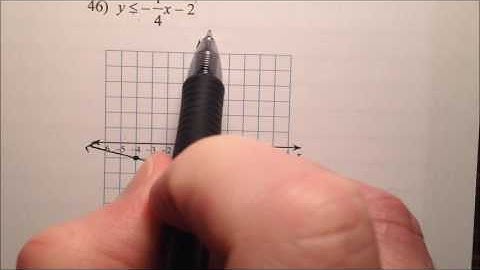Previously, you learned how to graph a single linear inequality on the xy plane. In this lesson, we will deal with a system of linear inequalities. The word “system” implies that we are going to graph two or more linear inequalities simultaneously. The solution to the system will be the area or region where the graphs of all linear inequalities in the system overlap. NOTE: In order to be successful in graphing linear inequalities, you are expected to know how to graph a line on the xy-plane. Otherwise, take a moment to review the material. Steps How to Graph System of Linear InequalitiesStep 1: Graph every linear inequality in the system on the same xy axis. Remember the key steps when graphing a linear inequality:
Step 2: Shade the region where all the areas of the linear inequalities intersect or overlap. If there is no region of intersection, we say that the system has no solution. Let’s go over some examples to illustrate the procedure. Examples of Graphing System of Linear InequalitiesExample 1: Graph the following system of linear inequalities:  The good thing about the given problem is that all y-variables are already on the left side of the inequality symbol. In this form, we can easily determine what area to shade with reference to the boundary line.


We call this solution area “unbounded” because the area is actually extending forever in a downward direction. You will see an example of a “bounded” area in the next example.
 Example 2: Graph the following system of linear inequalities:  The system contains three inequalities, which means we are going to graph three of them. Notice, that all of the inequality symbols have an “equal to” component. This tells us that all the boundary lines will be solid.
\color{red}\boxed{y \le {1 \over 2}x + 1} 
\color{blue}\boxed{y \ge 2x - 2} 
\color{green}\boxed{y \ge - {1 \over 2}x - 3} 
We call this system “bounded” because the region where all solutions lie are enclosed by the three sides coming from the boundary lines of the linear inequalities.  Example 3: Graph the following system of linear inequalities:  When I look at the three inequalities included in the system, there are three things that I need to consider:
If you need extra help, learn how to graph vertical and horizontal lines. Now were are ready to graph each one of them.
\color{red}\boxed{y < - {1 \over 2}x + 1} 
\color{blue}\boxed{y > - 1} 
\color{green}\boxed{x \ge - 3} 
This is also a “bounded system” where the solution region is enclosed by two dashed line segments and one solid line segment.  Example 4: Graph the following system of linear inequalities:  Both of the inequalities need some rewriting so that the variable “y” is located on the left side by itself. Here’s the first one. Make sure to switch the direction of the inequality symbol whenever you divide the inequality by a negative number.  And here’s the rewriting of the second inequality. This time we don’t divide the inequality by a negative number; that’s why the orientation or direction of the inequality symbol remains the same.  Let’s go ahead and graph them.

 Since the two shaded areas don’t intersect or overlap, this tells us that the given system of inequalities has NO SOLUTION. You may have also observed that the boundary lines have equal slopes, both m = –2, which implies that they are parallel lines and, therefore, won’t intersect. You might also be interested in: Solving Linear Inequalities Steps on How to Graph Linear Inequalities Graphing Linear Inequalities Examples Solving Compound Inequalities |

Advertising
LATEST NEWS
Advertising
Populer
Advertising
About

Copyright © 2024 kemunculan Inc.












